The dreaming spires of Oxford are shrouded in mist, the streets hushed with exam silence as we walk out of the city along its canal. Soon, we join the Thames Path and continue for a few miles to The Trout Inn at Wolvercote, one of Inspector Morse’s favourite watering holes.
It seems only fitting to pause for an ale before heading across country, through the pretty village of Bladon, where Winston and Clementine Churchill are buried in a surprisingly modest grave, then on to Blenheim Palace, home to the Dukes of Marlborough but also where Churchill was born.
After admiring the palace and its artworks, we walk on through Capability Brown-landscaped gardens, past a 300-year-old cedar of Lebanon which features in Harry Potter And The Order Of The Phoenix, before reaching Woodstock.
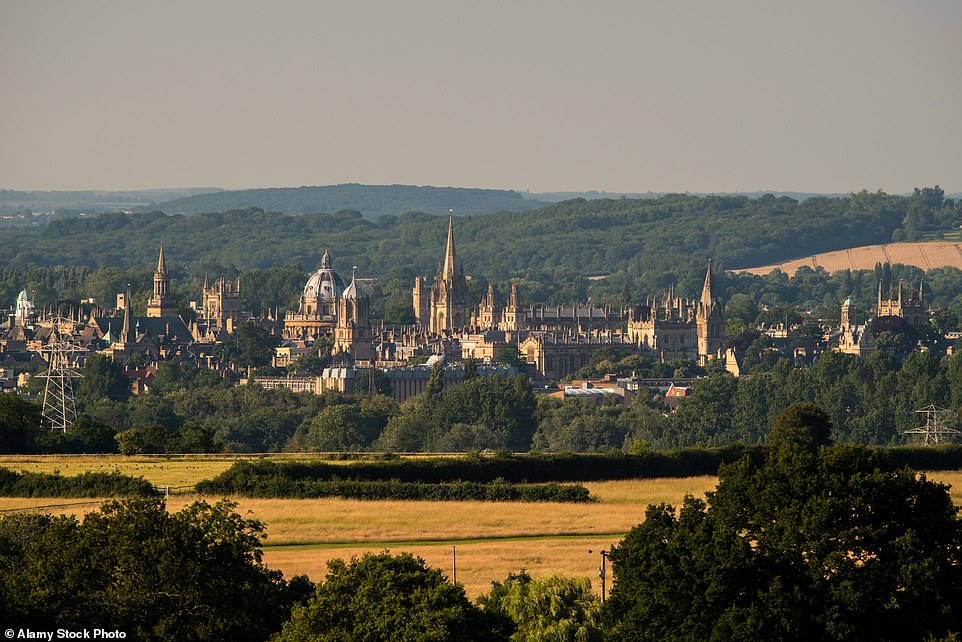
Town and country: A stunning view of Oxford. During Lizzie’s walk its streets are ‘hushed with exam silence’
Here we stop for the first night on our eight-day walk from Oxford to Bath, a journey of 103 miles. The new route, offered by Headwater Holidays, is aimed at those who ordinarily might take one of their walking trips abroad. But with overseas travel still up in the air, the company has boosted its UK itineraries and this one links two beautiful cities, winds its way along the southern periphery of the Cotswolds, and takes in a variety of Roman roads and national trails.
On our third day, just outside the market town of Witney, we come across bathers in various states of undress after taking a dip in the River Windrush.
The river helped Witney achieve fame as a seat of blanket manufacturing, as it provided clean water in the volume necessary for the cloth-making process.
From the late Middle Ages, the ‘Golden Fleece’ of the Cotswold sheep created a boom in the wool trade and left an unrivalled legacy of grand manor houses, ‘wool’ churches financed by wealthy merchants and farmers, and stunning market towns.
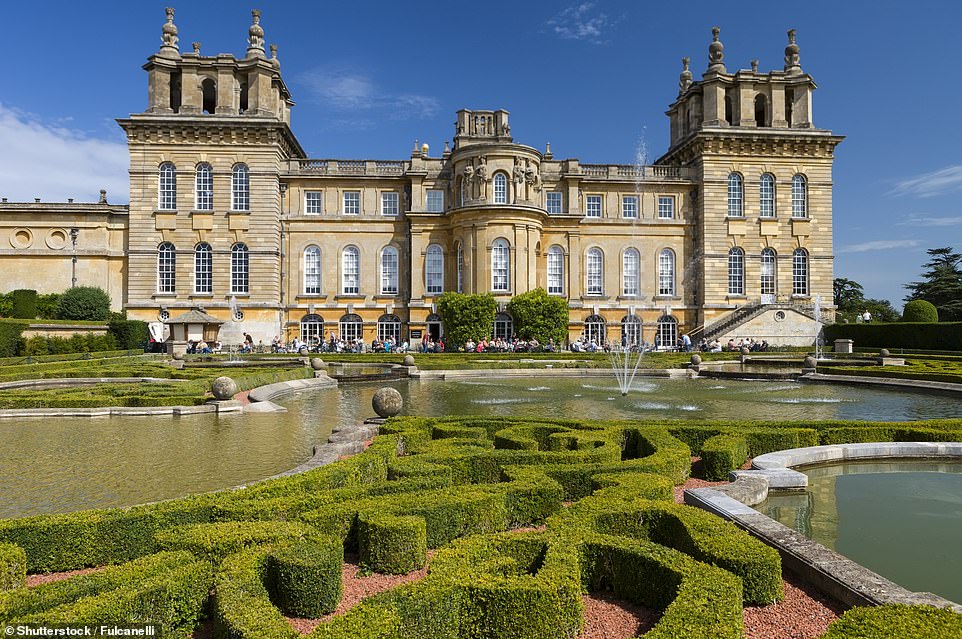
The walk gives Lizzie the chance to admire Blenheim Palace, pictured, where Winston Churchill was born. Today, the grand estate is home to the Dukes of Marlborough
We pass by the Grade II listed Asthall Manor, near Burford, where the Mitford sisters lived, and the church in the same village.
Its clumsy restoration prompted the foundation of the Society for the Protection of Ancient Buildings in 1877.
Many of the UK’s long-distance trails take in spectacular parts of the countryside but leave out the towns and cities, almost as if hikers are averse to a bit of urbanity, but this route is a wonderful blend of town and country.
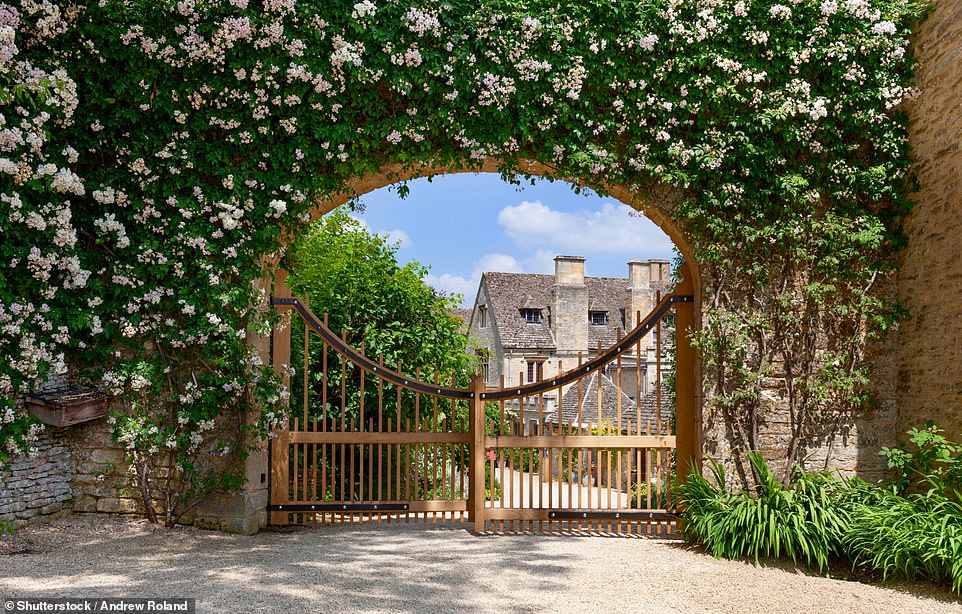
The walk is routed past Grade II listed Asthall Manor (pictured here through an arch), where the Mitford sisters famously lived
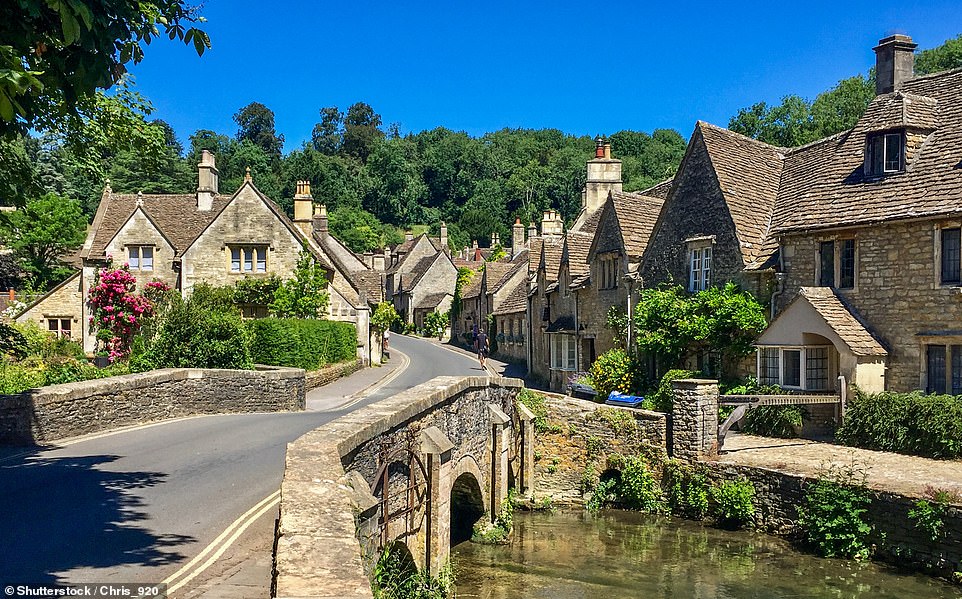
Lizzie describes the Cotswolds village of Castle Combe as ‘impossibly pretty’ and ‘enchanting’
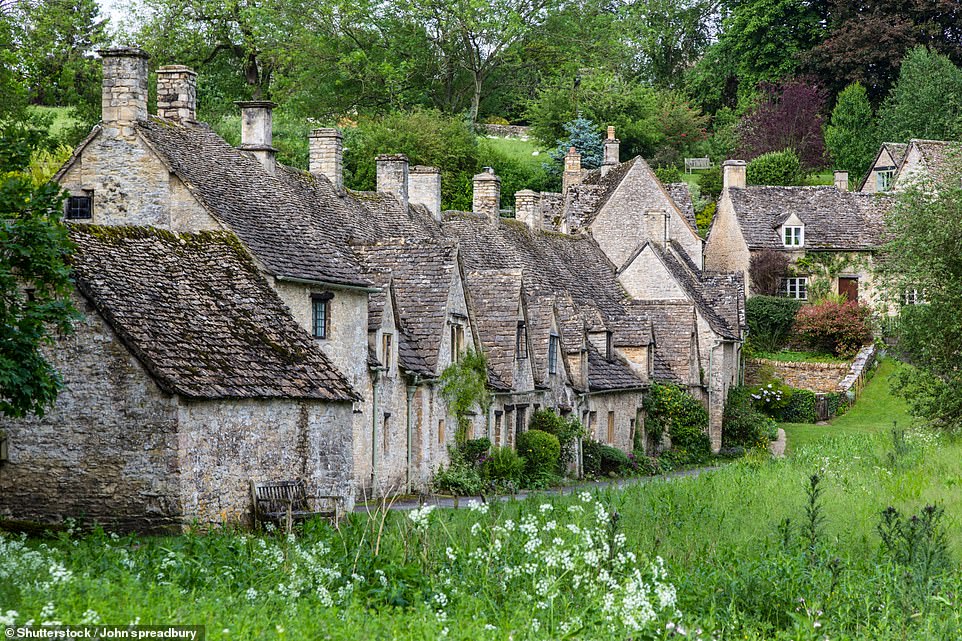
William Morris once described Bibury as ‘the most beautiful village in England’. Pictured are the village’s Arlington Row cottages, which Lizzie and her group stroll past. She writes: ‘A National Trust notice politely reminds us that these are homes and we try not to be too obvious as we photograph them’
TRAVEL FACTS
Lizzie Enfield was a guest of Headwater (headwater.com), which has a new nine-night self-guided walking holiday from Oxford to Bath priced from £1,459pp, including accommodation with breakfast daily, luggage transfers and all route directions and maps.
Advertisement
It avoids the busier Cotswold destinations such as Chipping Norton and Stow-on-the-Wold and takes in a host of quieter but equally enchanting places, including Burford, Tetbury, the impossibly pretty Castle Combe, and Cirencester, where the local museum has some of the best Roman mosaics left in this country.
The unifying feature of the area is the famous limestone, which lends the built landscape a unique warmth and harmony. It’s in evidence everywhere: in the construction of buildings, the networks of dry-stone walls, ancient footbridges and the flower-rich limestone grasslands, which fed the sheep that built the wool trade.
Ironically, the decline of this trade led to the area’s revival in the 19th Century, brought about by the pioneers of the Arts and Crafts movement who fell upon a landscape largely untouched by the Industrial Revolution. William Morris described Bibury as ‘the most beautiful village in England’, and we are inclined to agree as we stroll past its beautiful and now-iconic chain of terraced workers’ cottages, Arlington Row. A National Trust notice politely reminds us that these are homes and we try not to be too obvious as we photograph them.
The aesthetic ideal at the heart of the Arts and Crafts movement is still very much in evidence in our accommodation along the route: boutique B&Bs, Tudor coaching inns and elegant Georgian townhouses, where we relax in roll-top baths, sip tea from china cups and sleep in four-poster beds.

Walkers can travel along the banks of the Kennet and Avon Canal to reach Bath. Pictured are the city’s famous Roman baths
We average ten to 15 miles a day (our luggage is transported) and the terrain is gently undulating but wonderfully varied. We walk across high Wold ridges, along river banks, and through water meadows, woods of ancient beech and leafy glades with banks of the wild garlic.
Our final day’s walk is 17 miles and we enter Bath along the banks of the Kennet and Avon Canal before climbing stone steps that bring us out beside the famous pump rooms – a fittingly symmetrical end to a journey that began on the banks of the canal in Oxford.
As we sit in a pub garden overlooking Pulteney Weir, we toast the completion of our walk from Oxford’s dreaming spires to Bath’s steaming spa.
Source link : https://www.dailymail.co.uk/travel/escape/article-9914549/Revelling-majesty-Englands-countryside-walk-Oxford-Bath.html












